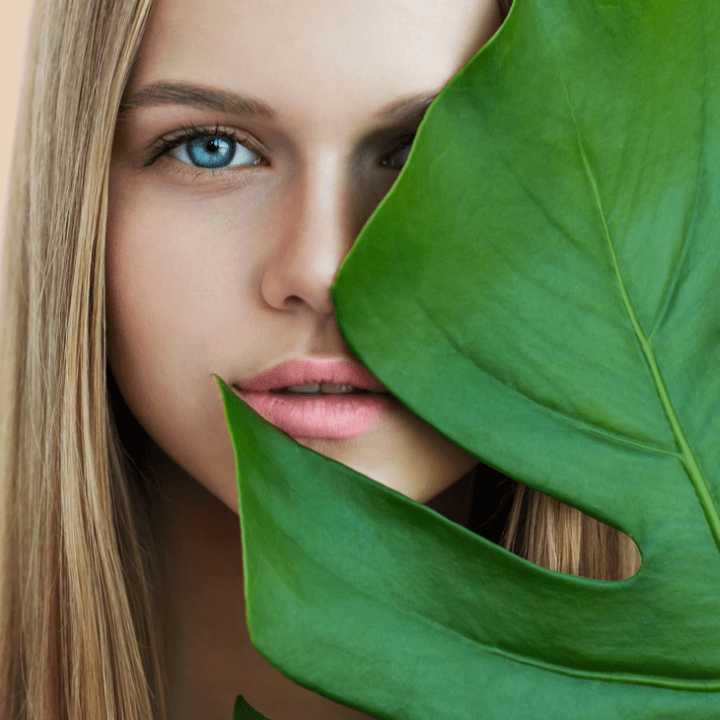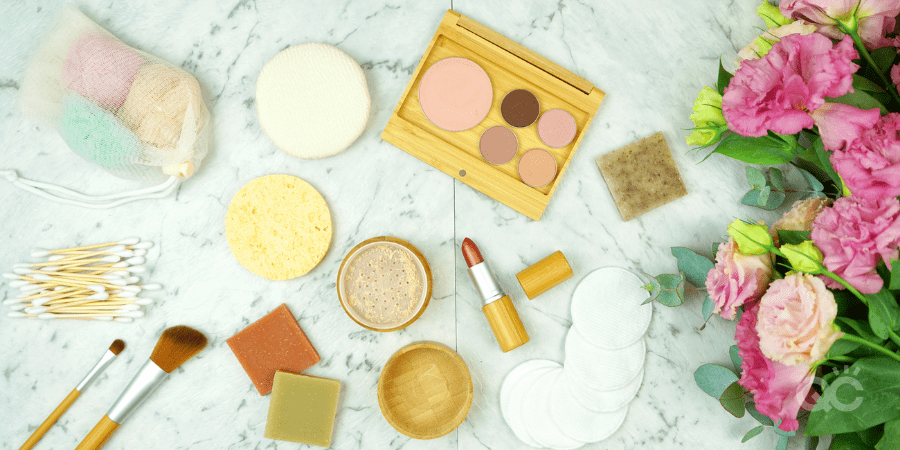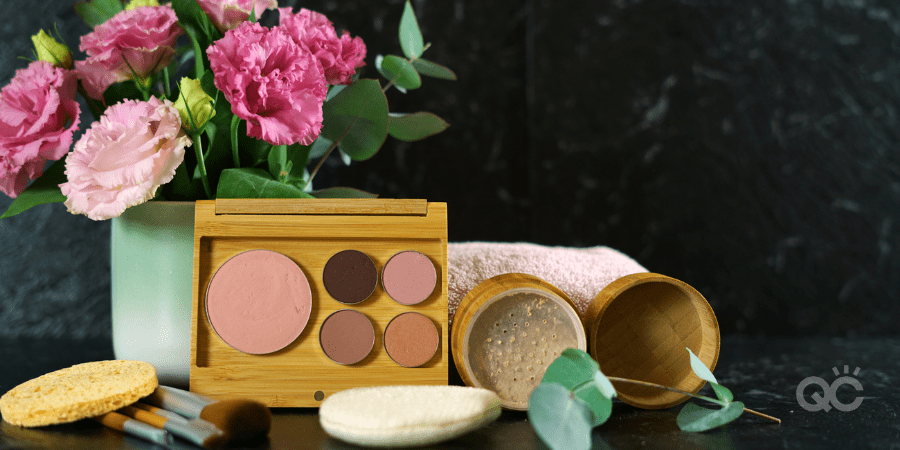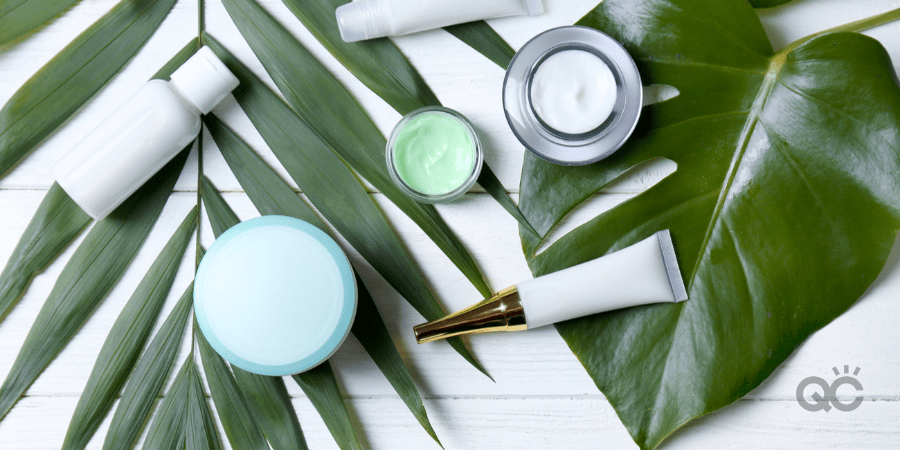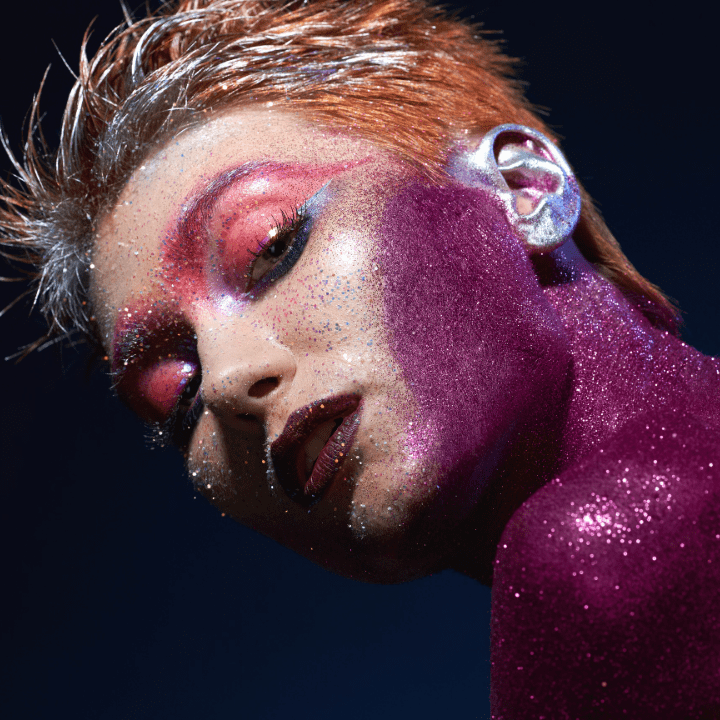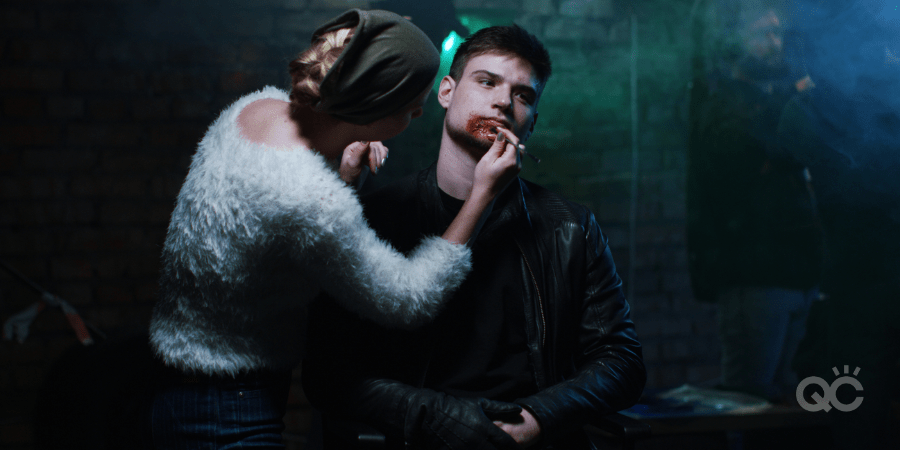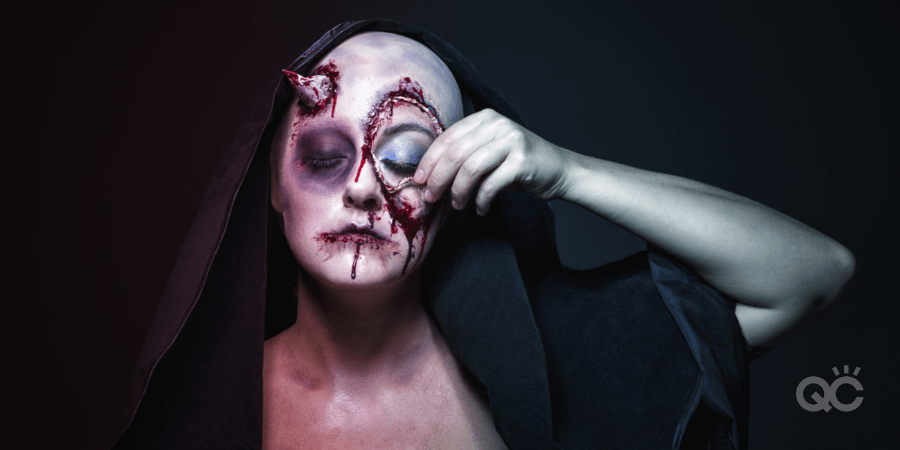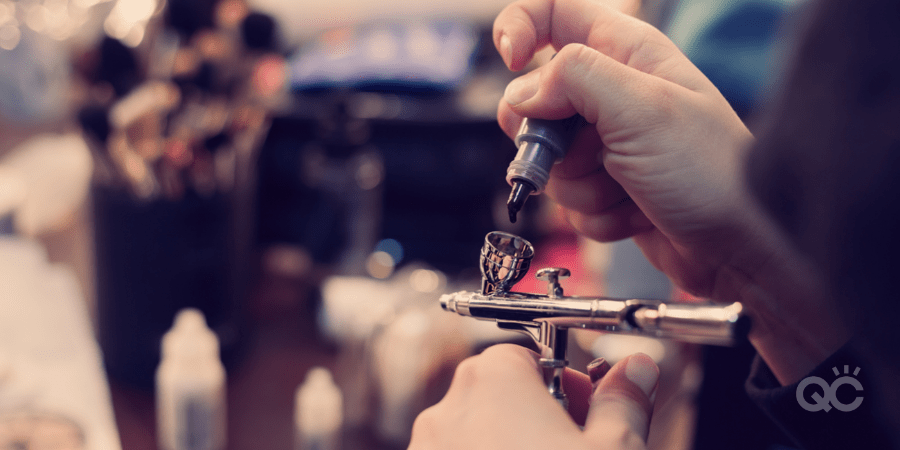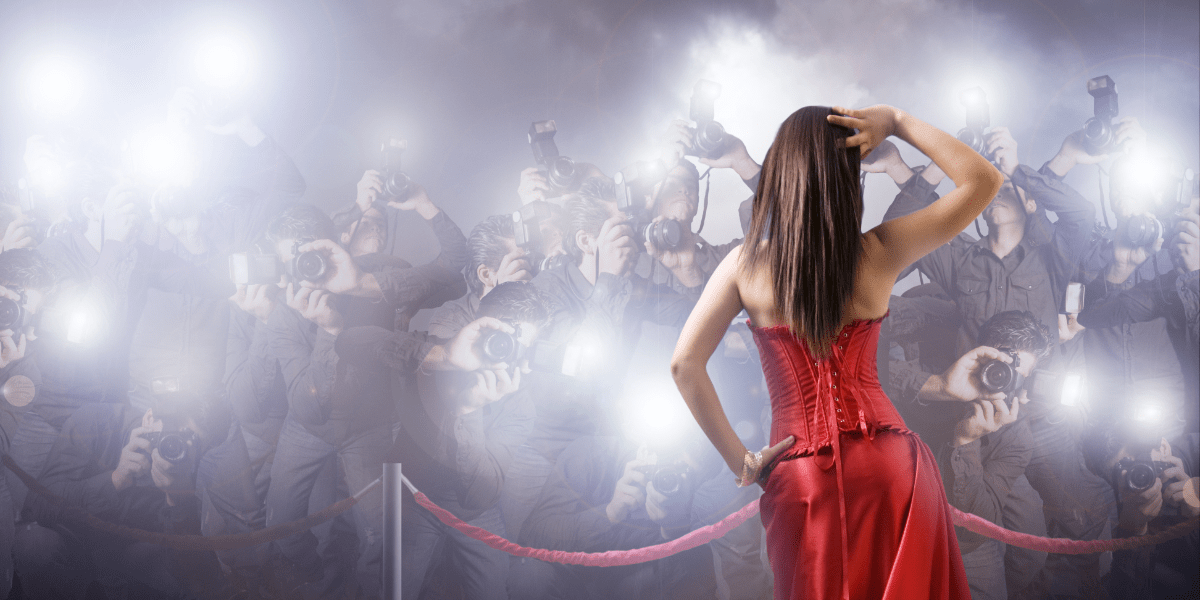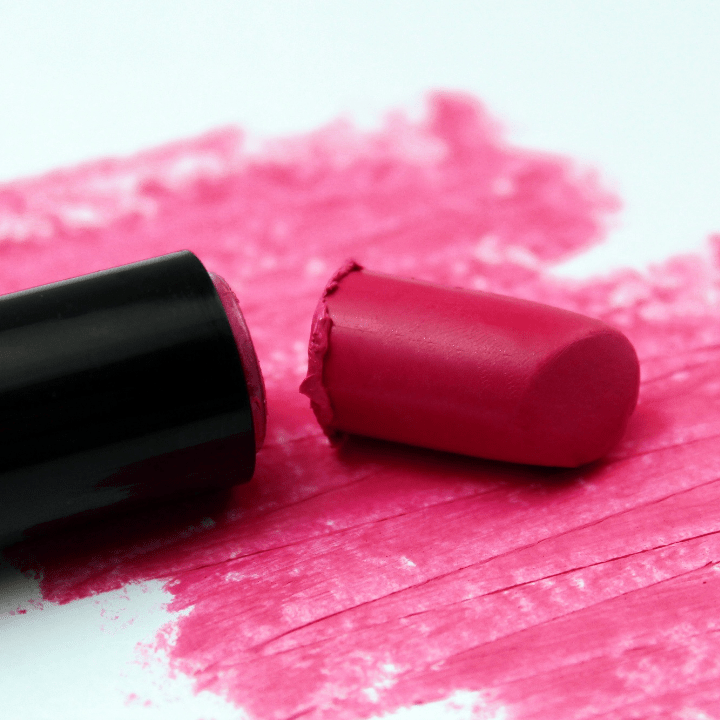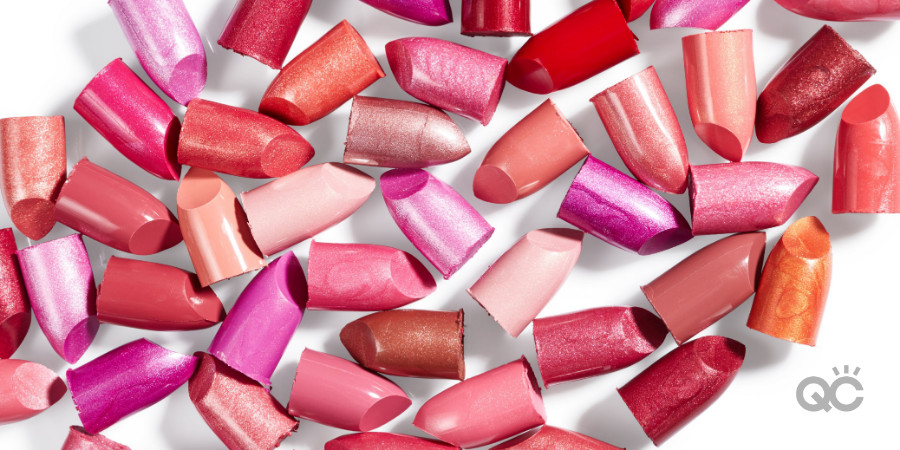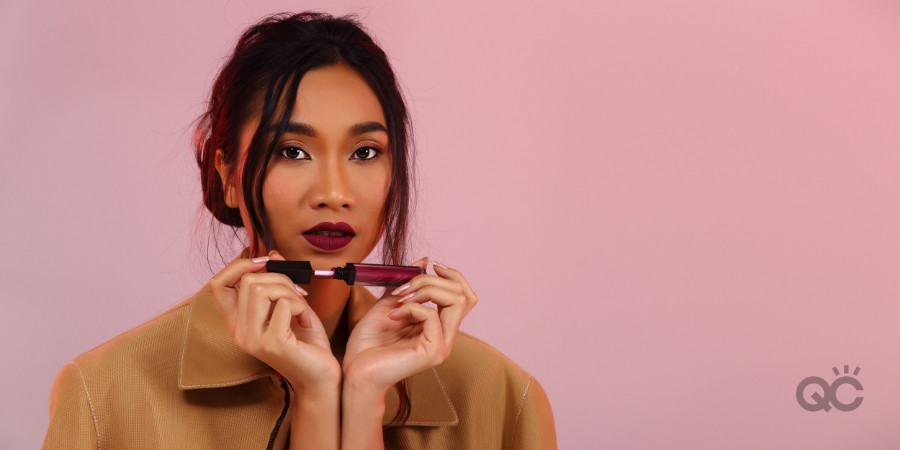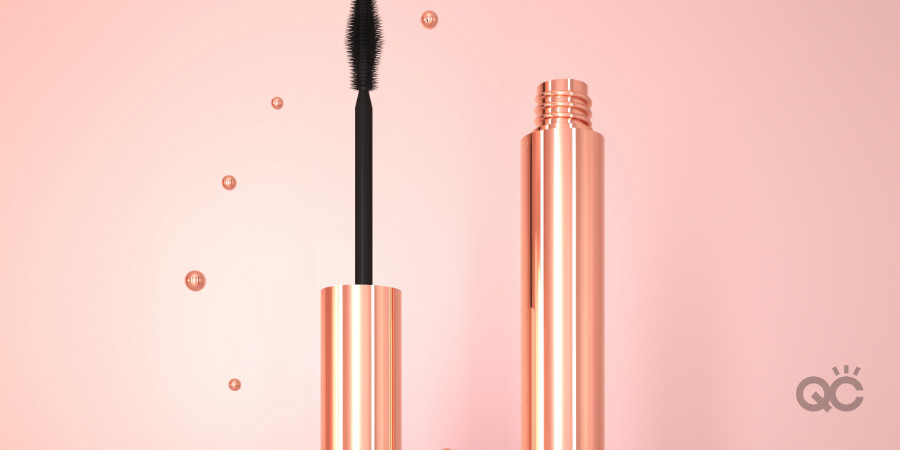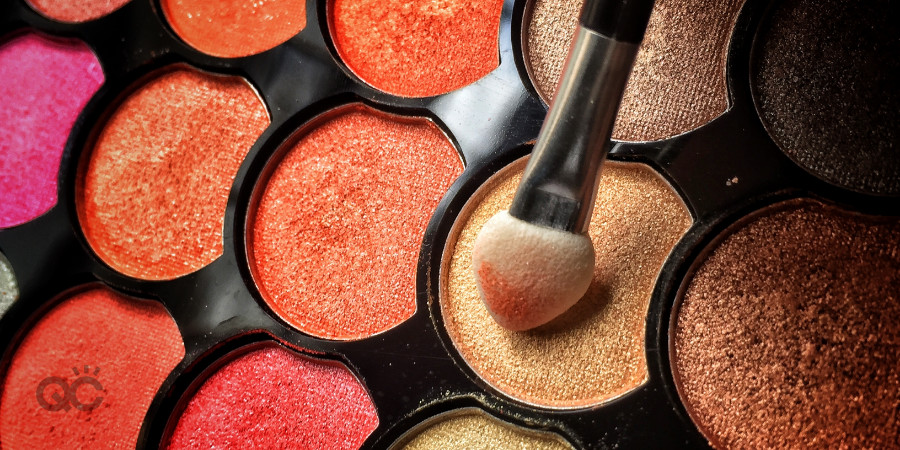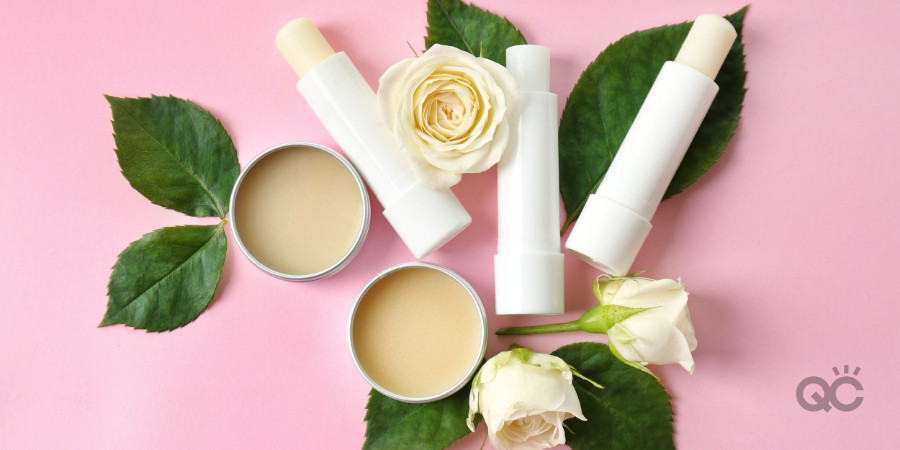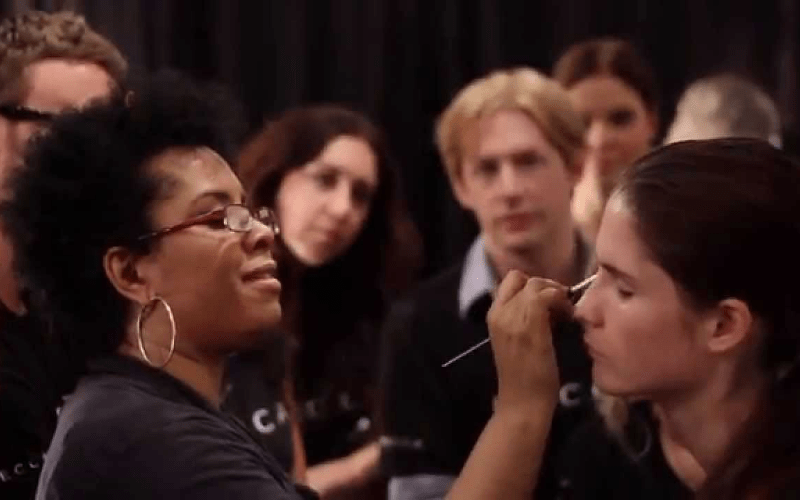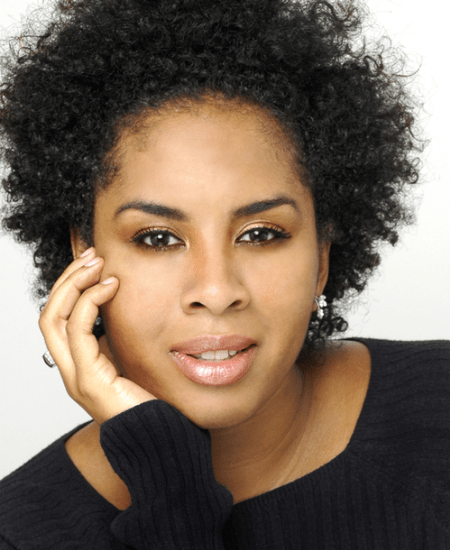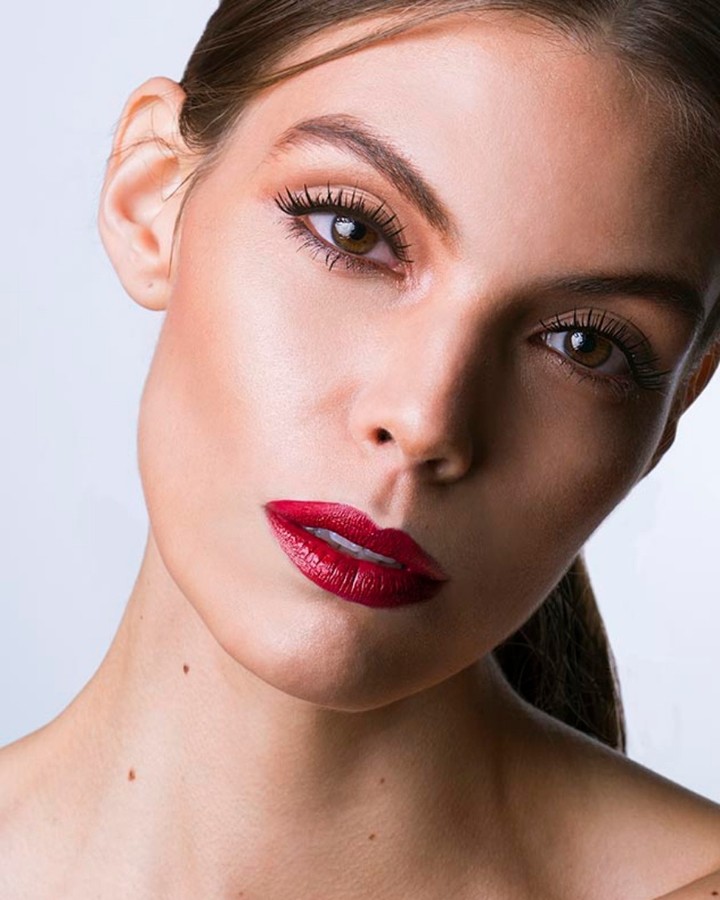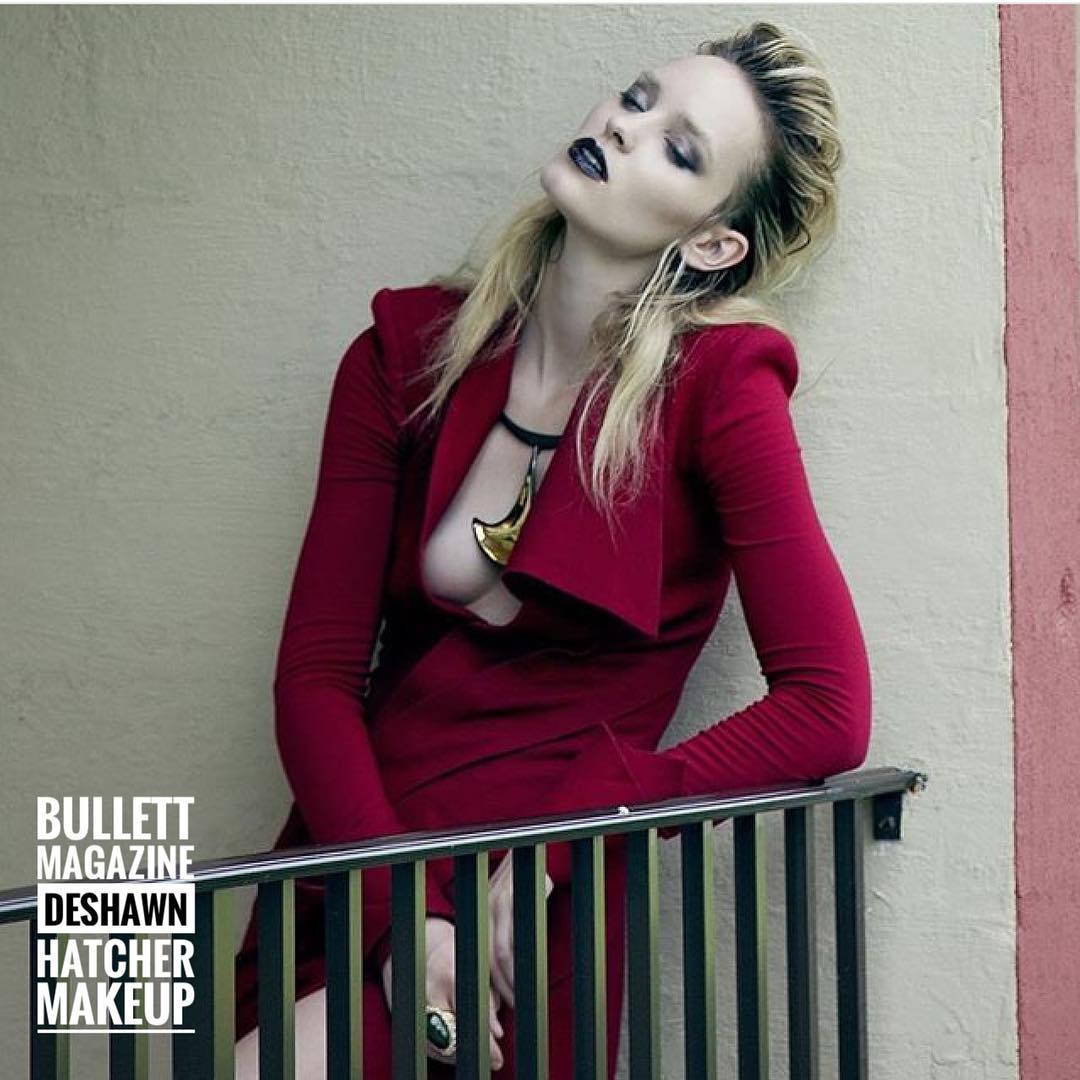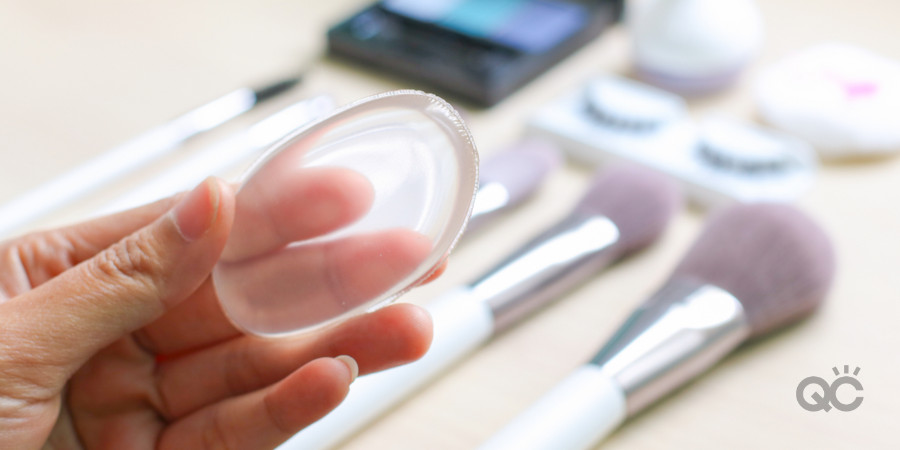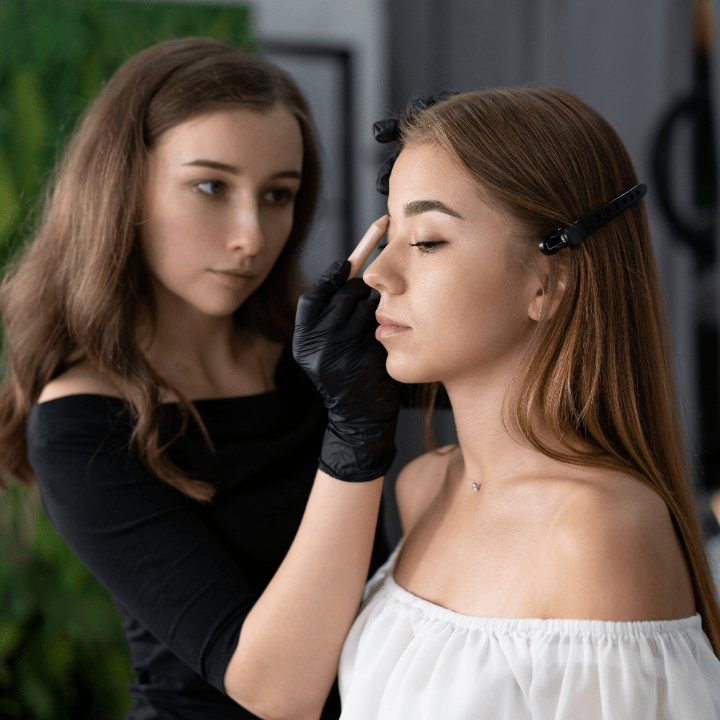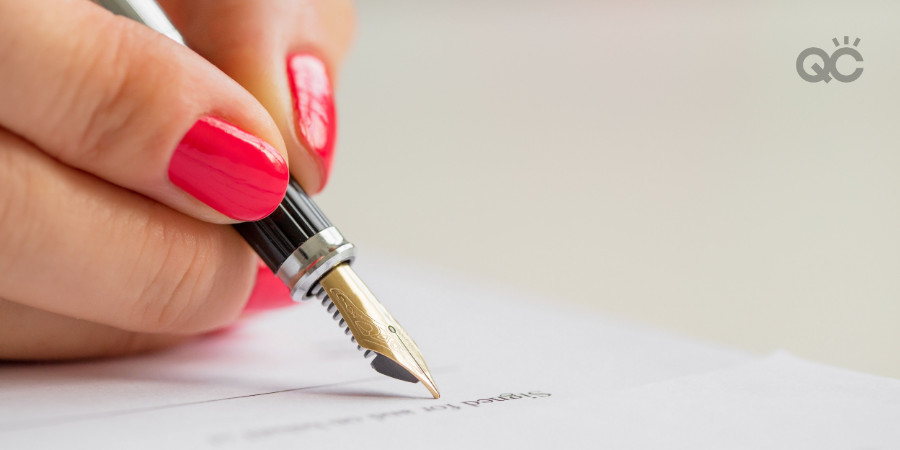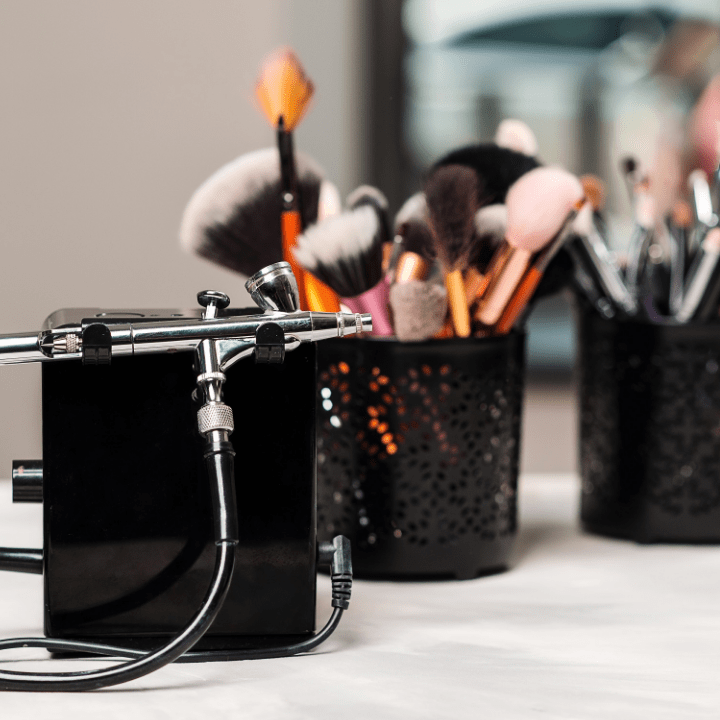
In the cosmetic world, there’s a long-standing debate over which is better for your makeup artist kit: airbrush makeup or traditional makeup? The truth is, if you’re looking for a definitive answer, you’re probably not going to find it. This is because one is not better than the other 100% of the time! Instead, you’ll find that for some clients, airbrush makeup is the better option. But for others, regular makeup is the way to go.
So what’s the difference between the two? In which areas does airbrush makeup triumph? Alternately, when is regular makeup the stronger choice? Let’s find out!

What is Airbrush Makeup?
True to its name, airbrush makeup is a type of makeup specifically created for an airbrush gun and air compressor. The makeup itself is most often water-based, alcohol-based, or silicone-based. Airbrush makeup is typically applied in multiple, sheen layers.
These layers build up a flawless finish on the skin that photographs effortlessly, blends beautifully, and is most often times waterproof. Furthermore, airbrush makeup can also be used for other areas of the face, such as eye makeup, blush, contour, and highlighting, etc.
What is Regular Makeup?
More frequently used and convenient for everyday wear, traditional makeup is considered any of the following products that are applied to the skin using makeup brushes, sponges, etc.:
- Liquid, cream, and powder foundations
- Primers and eye shadows
- Blush
- Contour and highlights, etc.
Which is Better?
Some situations may deem airbrush makeup the leading contender, while in others, traditional makeup is the winner. In some cases, both are equally good. For example, some may argue that airbrush makeup lasts longer than regular makeup since most airbrush makeup is waterproof.
However, plenty of traditional makeup is also waterproof. But even for products that aren’t, so long as the makeup has been properly primed, applied, and finished with a strong setting powder and/or spray, it should hold throughout the day just as well as airbrush makeup would.
Similarly, while airbrush makeup is known for its incredible illusion of flawless skin, that doesn’t mean traditional makeup can’t do the same. If the products are properly prepped, applied, and finished by an expert who knows what they’re doing, both makeup types can create exceptional results on the client and photograph really well.
But we’re here to see the differences between airbrush and regular makeup, not just their similarities. So, here are some circumstances that show when one may be better than the other…

Covering Pimples and Other Blemishes
While both types of makeup can do this, regular makeup is superior. Yes, airbrush makeup – especially when layered – can help reduce the appearance of blemishes, but that’s not what it was designed for. Airbrush makeup is lighter, whereas traditional makeup is created for fuller coverage.
On top of this, airbrush makeup often times can be limited in terms of its color choices. Some clients may have skin tones, acne, or blemishes that airbrush makeup just doesn’t have the right pigments for. But regular makeup offers a much large range of colors to work with and choose from.
Regular makeup also has color correctors, specifically made to help mask imperfections. If your client has something she needs to be covered up, you will be able to find a regular product in your makeup artist kit to do the job.
The winner: Regular makeup.
Withstanding Moisture
Especially for those who’s clients are going to be outside in the hot sun, or taking part in an emotional event (such as a wedding), makeup artists need to arm themselves with the right products that can best combat moisture. If your client sweats or cries, she doesn’t want to have to worry about her makeup cracking, creasing, or running down her face.
Technically, with the right setting products, both airbrush and regular makeup can handle this task. That being said, airbrush makeup is inherently better at this – especially if the airbrush makeup is silicone-based. Most airbrush makeup is already waterproof, but when it’s silicone-based, it adds that extra layer of protection that regular makeup doesn’t have.
The winner: Airbrush makeup.

Working with Right Skin Type
But as we discussed, most airbrush makeup is waterproof, giving it a much thinner consistency. It doesn’t create that appealing, flawless finish on dry and oily skin. Rather, it can often appear flaky once applied, especially on drier skin. For these skin types, your clients would benefit more from traditional makeup.
If, however, your client has dry or oily skin, airbrush makeup might be unflattering. Regular makeup has a thicker, creamier texture. It can help add moisture or properly mask oiliness, depending on what the skin requires.
Neither makeup is a one-fits-all when it comes to the various different skin types. Airbrush makeup is best for those with well-hydrated skin. As a rule of thumb, if your client has normal to combination skin, airbrush makeup is going to look jaw-droppingly stunning on her (so long as the makeup is applied by an MUA who’s trained in using an airbrush machine, of course). Between airbrush makeup and regular makeup, a client with either of these skin types would likely best benefit from airbrush makeup.
The winner: Draw. It depends on the client’s skin type.
Cost
But you also need to keep in mind that if you have clients on a budget, they may not want to shell out more money for airbrush services.
In general, airbrush makeup can actually prove to be a bit pricier. You have to factor in the cost of a good quality machine, and then the makeup products themselves (which aren’t exactly cheap). Sure, you can make up for that by charging clients more for your airbrush services than you would your regular makeup services.
But don’t forget: with regular makeup, there are plenty of products you can swap for their drugstore counterparts. You have the option to save money, without sacrificing quality. That leftover cash can then be put towards buying even more products!
Because there appear to be more products you’d need to purchase for traditional makeup, you may think that it would be more expensive than airbrush makeup.
As a professional MUA, building up and then maintaining your makeup artist kit will be an investment. Whether it’s regular makeup or airbrush equipment/makeup, it’s going to cost money, and it won’t always be cheap. This is a reality every makeup artist faces, and while we know it may suck sometimes, it’s also worth it.

How it Looks on Your Resume
Here are the facts: so long as you have formal makeup training and certification under your belt, regardless of whether it’s in airbrush makeup or regular makeup, your resume will impress clients. Any education and professional training are going to help you stand out from the competition.
That being said, an MUA with experience in both regular makeup and airbrush makeup might look more proficient overall than an MUA without the additional airbrush training. It not only tells this client that you’re an even more well-rounded makeup artist, capable of different methods and applications. It also demonstrates that you have the passion, dedication, and drive to acquire even more schooling and certifications to your name.
The winner: Airbrush makeup – though schooling and certification in BOTH are strongly recommended.
At the end of the day, there are pros and cons to airbrush makeup AND traditional makeup. It really depends on your level of training, your comfort level with the products, your client’s skin type, what she wants, etc. There are tons of factors to be considered, and as you can see, no singular situation in which airbrush makeup or regular makeup is 100% the best option.
That being said, which do YOU prefer more? Let us know in the comments!
